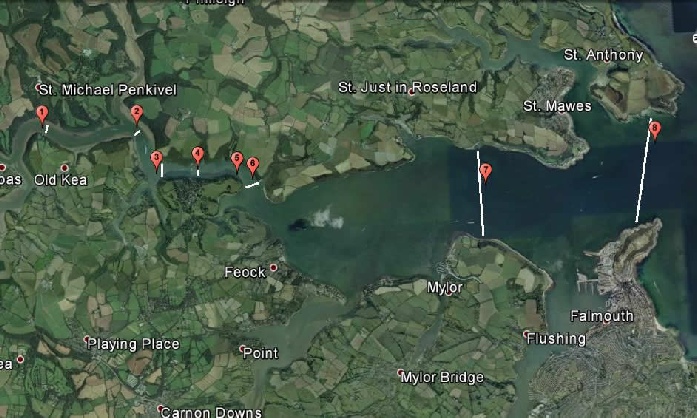
|
Table 3.0.1 - |
|
|||||||
|
Site No. |
Latitude |
Longitude |
Time (UTC) |
Depth (m) |
Air Temp (°C) |
Secchi Depth (m) |
Wind Speed (ms⁻¹) |
Wind Direction (°) |
|
1 |
50° 14.391' N |
005° 00.890' W |
09:20 |
6.5 |
|
1.26 |
2.6 |
207.4 |
|
2 |
50° 13.501' N |
005° 00.933' W |
10:07 |
11.4 |
|
1.72 |
1.9 |
227.2 |
|
3 |
50° 13.328' N |
005° 01.614' W |
10:35 |
13.2 |
18.3 |
1.85 |
4.8 |
200.3 |
|
3R |
50° 13.329' N |
005° 01.614' W |
10:52 |
12.6 |
18.2 |
|
|
|
|
4 |
50° 12.940' N |
005° 01.571' W |
11:20 |
14.6 |
18.3 |
1.67 |
3.1 |
226.5 |
|
5 |
50° 12.574' N |
005° 01.664' W |
11:35 |
4.2 |
18.7 |
|
6 |
238.1 |
|
6 |
50° 12.436' N |
005° 01.749' W |
11:48 |
17.8 |
18.5 |
1.8² |
|
|
|
7 |
50° 10.250' N |
005° 01.942' W |
12:31 |
22.8 |
17.7 |
2.9³ |
9.1 |
227.1 |
|
8 |
50° 08.652' N |
005° 01.407' W |
13:17 |
30¹ |
17.4 |
6.7⁴ |
6.4 |
226.7 |


